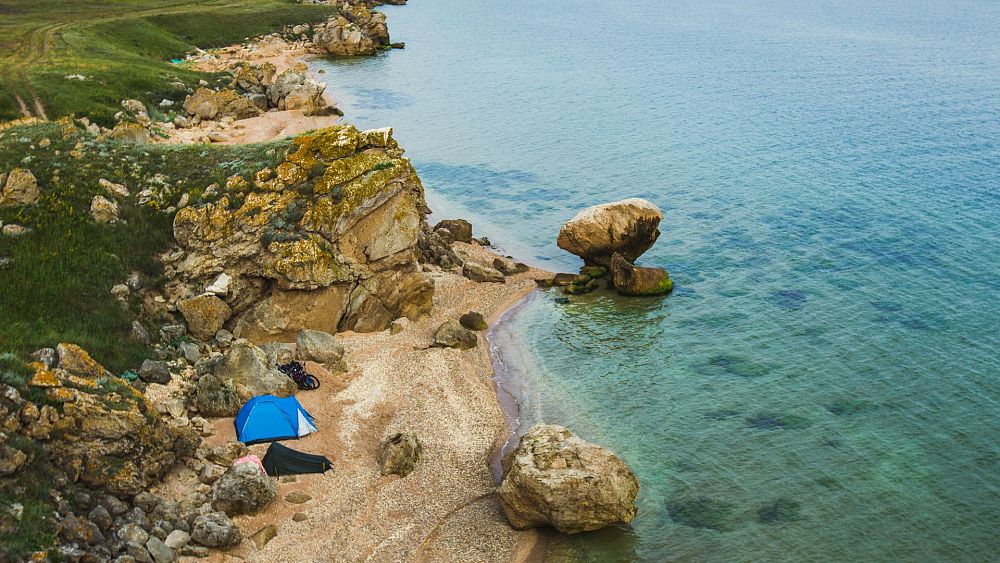‘Bikepacking’ is the perfect way to enjoy the great outdoors this summer
Travellers are embracing the adventurous new trend, part backpacking and part bike-touring. Searches for bike holidays have surged by 151 per cent over the past year, booking platform Omio has revealed, while searches for ‘bikepacking’ have increased by 100 per cent.
This unique holiday option combines the freedom of a bicycle with the self-sufficiency of backpacking. With your essentials strapped to your bike, you can venture off the beaten path, discovering hidden gems that are inaccessible by car.
It’s great for the planet, too - and even better if you reach your starting point by train. Read on to discover four of Europe’s best bikepacking routes, each of which starts at an easily accessible train terminal.
How to bikepack safely using trains
Many trains have designated cycle spaces, but it's best to check ahead of time and reserve yourself a spot. Most providers charge a small additional surcharge.
Check local camping regulations before you go. Some European countries permit wild camping, meaning you can set up a tent on most public land. Most countries restrict camping to designated zones though, so make sure you plan ahead.
The duration of each trip can vary based on your pace, fitness level and the number of stops you make along the way.
Enjoy museums and chocolate between Amsterdam and Bruges
5 Days, 280 km
Cyclists can follow the North Sea Cycle Route from Amsterdam to Bruges. Start your journey in the vibrant Dutch capital, admiring the picturesque canals and world-class museums.
En route to Belgium, enjoy coastal scenery, dunes and historic towns like Ghent. Once you reach Bruges, indulge in delicious Belgian chocolate and beer - with hundreds of kilometres of cycling under your belt, you’ll definitely have earned it.
While this route is very flat, there can sometimes be strong headwinds that make the ride more difficult. You can use the Windfinder app to determine the best time and direction to ride.
Both Amsterdam and Bruges are major train hubs, meaning the route is easily accessible by rail.
Check out flamingos on the road to Perpignan
6 Days, 459 km
This route winds nearly 500 km from Valance on the banks of the Rhône River to Perpignan near the French border. Cyclists should follow the southern section of the European divide trail, a challenging ride with some rugged off-road sections.
En route, consider stopping in Arles, a UNESCO World Heritage Site. The city boasts well-preserved Roman ruins, including the Arles Amphitheatre and the Alyscamps necropolis. If nature is more your thing, keep your eyes peeled for flamingos and wild horses in the marshes of the Camargue.
Valence is a 2.5 hour train journey from Paris.
Climb the Devil’s Staircase in the Scottish Highlands
14 Days, 885 km
Weaving through the mountains and lochs of the Scottish Highlands, the Highland Trail 550 is not for the faint of heart.
The 885 km route takes riders through ancient wilderness, past gushing waterfalls and over remote peaks. With highlights like the ‘Devil’s staircase’ - a precipitous climb up the side of a mountain - it’s recommended for experienced bikepackers only.
Scotland is one of the few countries in Europe that enshrines the right to wild-camp in law - meaning you can pitch a tent on all public land (subject to a few exemptions and restrictions).
To reach the trail by train, board a two hour service from Glasgow to Tyndrum.
Check out Roman ruins in Germany’s rolling forests
3 Days,208 km
The Taunus Storm Chase is an exhilarating cycling adventure that takes riders through the Taunus region in Germany. This route starts and ends in the medieval village of Runkel, and winds through rolling hills, lush forests and charming towns.
The historic region is filled with Roman ruins, and parts of the bike track follow the former line of fortifications that separated the Roman Empire and the Germanic tribes until 260 AD.
You can reach Runkle by train - it’s around six hours from Brussels.


